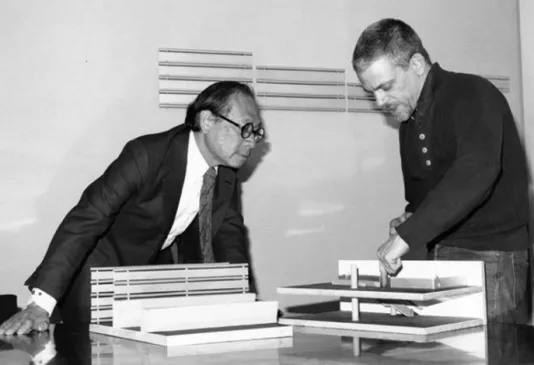I.M. Pei, Wiesner Building, 1985. Photo by Chuck Mayer Photography.
About

History
On October 2, 1985, the List Visual Arts Center officially opened in the I.M. Pei-designed Wiesner Building. Artists Scott Burton, Kenneth Noland, and Richard Fleischner collaborated with Pei to create a space dedicated to experimentation and interdisciplinarity—a defining spirit that continues today.
In celebration of the 40th anniversary, explore the milestones that have shaped the List Center’s history.

I.M. Pei (left) discussing the Wiesner Building with sculptor Scott Burton.
Support and Membership
Your support matters now more than ever. Help the List Center navigate the changing world as we offer in-person, virtual, and hybrid experiences that keep us connected.


